With the 6 nations kicking off last weekend we are looking at the demands on players in rugby. Here we take a look at a few of the most common rugby injuries that present themselves throughout a year of competition.
Rugby is a fast-moving and high-intensity team sport with huge demands on various muscles, joints and ligaments. On average, 1 in 4 rugby players will suffer an injury during the season, with each player committing 20 to 40 tackles per match.
● Rugby injury rates are reported as being nearly three times higher than soccer.
● Adults aged 25–34 years are at higher risk.
When Do Rugby Injuries Occur?
● More injuries occur during matches (57%) than in training, and more often in the second half of the game. Nearly half of all injuries occur while a player is tackling or tackled.
Which Rugby Players Suffer the Most Injuries?
● Hookers and flankers sustain the most injuries.
● Forwards are more frequently injured than backs because of their greater involvement in physical collisions and tackles.
● In the backs, wingers and centres are at the highest risk of injury.
● In the scrum, the locks are at the highest risk of facial cuts and cauliflower ear (external deformity to the ear caused by repeated blows.
● Players in rucks and mauls commonly suffer injuries to fingers and thumbs, as well as abrasions and lacerations from cleats.
What Kinds of Injuries Occur in Rugby?
● Over 40% of injuries are muscular strains or contusions (bruising), 30% are sprains, followed by dislocations, fractures, lacerations, and overuse injuries.
● Sprained ankles are a common injury, with ankle sprains representing almost 1 in 7 rugby injuries.
● Between 5-25% of rugby injuries are head injuries, including concussions.
● In adolescent athletes (aged 10-18 years), 35% of injuries are fractures, of which 24% involve the clavicle.
● Superficial injuries represent 20% of rugby injuries, followed by head injuries and sprains (16%).
● Of the head injuries, 44% are concussions.
Hamstring strain:
Hamstring Injuries represent one of the most commonly experienced injuries by athletes.
The cause of Hamstring Injuries are generally multi-factorial. Addressing all of these factors , will result in a successful rehabilitation and reduce the risk of recurrence. We treat hamstring injuries on a very individual basis, based on best research and our detailed assessment in our Rathfarnham physio clinic & our Sandyford physio clinic on a regular basis
Acromio Clavicular Joint Sprain
The AcromioClavicular joint, or the ‘AC’ joint is part of the shoulder complex. Its exact location is situated at the outside point of the collar bone where it is attached to the front of the shoulder blade.
A sprain of the AC joint refers to damage to the ligaments of the joint. The AC joint ligaments are most commonly damaged through a fall onto the tip of the shoulder, although the frequency at which rugby players get injured during tackles means this injury risk is common to this structure.
Knee Ligaments: ACL & MCL
Knee ligament injuries in rugby are extremely common, and pretty much everyone involved in the sport will know someone who’s had some kind of knee ligament injury or knee surgery. The Anterior Cruciate Ligament (ACL) and Medial Collateral Ligament (MCL) injuries are still the most common form of injury in rugby, only exceeded by concussions. There are a number of different types of knee ligament injury that can be sustained from rugby, ranging from a minor sprain of the MCL to major injuries such as an ACL rupture. With higher speed and force in the professional game, it’s possible to tear multiple ligaments and even dislocate the knee joint. Most knee ligament injuries occur suddenly, from someone landing on a player’s leg in a ruck whilst their legs in a bent position, or from side tackles where the tackler’s shoulder impacts on the side of the player’s leg, where the forces involved can be huge. However, to minimise the overall risk of any kind of injury, the most important thing is to train sufficiently in order to ensure that you’ve adequate strength in your quadriceps, hamstrings and core.
OR
Chat to us via our chat app ->>
WE HAVE YOU COVERED WITH OUR EXPERT SANDYFORD & RATHFARNHAM - KNOCKLYON PHYSIO TEAMS
You might not have any rugby injuries now but our team includes a lot of physios with professional rugby experience in both Sandyford and Rathfarnham-Knocklyon. We will be there for you when you need us!



